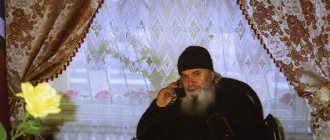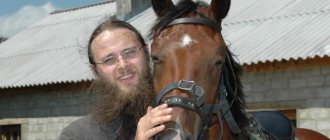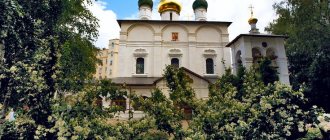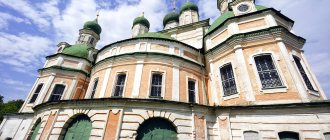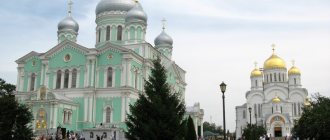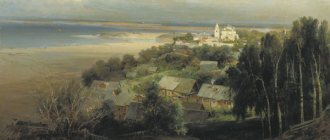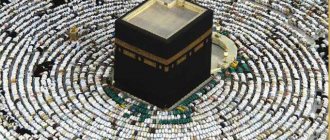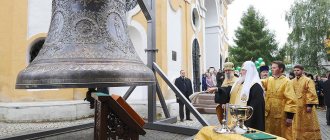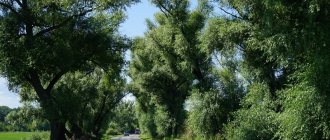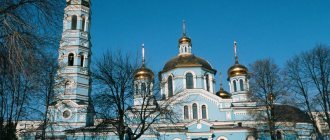"Save me, God!".
Thank you for visiting our website, before you start studying the information, please subscribe to our Orthodox community on Instagram, Lord, Save and Preserve † - https://www.instagram.com/spasi.gospodi/. The community has more than 60,000 subscribers. There are many of us like-minded people and we are growing quickly, we post prayers, sayings of saints, prayer requests, and timely post useful information about holidays and Orthodox events... Subscribe. Guardian Angel to you!
In the Holy Dormition Pskovo-Pechersky Monastery, one of the most famous churches in the world, there is a huge monastery with a centuries-old history, the basis of which was the elders - the great righteous people of their time. The monastery was never closed during its entire long life; it was not broken by wars and persecution by the authorities. It is rightfully considered a masterpiece of Christian culture, for it combines the unshakable beauty and majestic spirituality of Orthodoxy.
Address, how to get there, where to stay
The monastery is located in the city of Pechory, Pskov region, on Mezhdunarodnaya street 5 .
Phone – (83149) 2-63-60 or 2-18-60 .
You can get to the monastery from Pskov by taking bus No. 207 from the bus station, or by taxi.
You can stay at the free monastery hotel “Pilgrim’s House”, located a few kilometers from the monastery. A group of 7 people or more can stay there by appointment for three days.
You can spend the night in the guest house “Pilgrim’s Way”, hotel-park “Pechory-Park”, mini-hotel “Your Bereg”, hotel “Planet”, hotel “Strannik”. It is better to find out the number of available places in advance, as well as to book rooms.
You can also stay in private apartments or rooms in the city of Pechora.
Opening hours and schedule of services of the monastery
The Holy Dormition Pskovo-Pechersky Monastery is almost always available for pilgrims to visit. The caves are closed only from January 6 to 9 and from August 26 to 29.
A visit to the caves and monastery should be planned in advance, adjusting your visit to holidays, services and days of the week, since some caves are closed every Friday and Monday. They are also not available to the public one hour before the start of the service.
Tours from local guides or monks are available from 9 am to 4 pm for a symbolic donation. You need to sign up for them by phone or on the official website of the monastery.
Please note: while visiting the monastery and taking excursions, women and men should dress appropriately, and also ask what can be photographed and what cannot be photographed.
In addition to the excursion, you can always get holy water from local springs. During the liturgy, you can confess and receive communion in the monastery.
You can find out answers to your questions from 10 to 18 pm from the priest on duty at Sretensky Church.
The general schedule of services can be found below:
John's parish
15.08.2018
Two months ago, on June 10, 2022, in the Ioannovsky Monastery they said goodbye to Archimandrite Hermogenes, in the schema Schema-Archimandrite Tikhon (in the world Alexander Ivanovich Murtazov) (1935 - 2018) * . Many of our parishioners know that he was the confessor of the Pyukhtitsa, and more recently the Snetogorsk convent of the Pskov diocese, as well as the brother of Hierodeacon Nikon (Murtazov), an icon painter, writer, and singer living in the Ioannovsky Monastery. Father Hermogen was buried in the God-created caves of the Holy Dormition Pskov-Pechersky Monastery.
The editors of Pravprihod.Ru began to receive requests to tell us about the newly deceased elder. Today, in the first days of the Dormition Lent, when the Church speaks more often than usual about repentance and ways of salvation, about examples of true faith and the pillars of Christianity, on the day of remembrance of the first martyr. Stephen (34 AD), we bring to your attention excerpts from conversations and sermons of Archimandrite Hermogenes. After which we will give the floor to his brother.
WHAT TIMES DID THE LORD ALLOW US TO LIVE?
The Lord allowed us to live in an amazing time, which can be called the Second Baptism of Rus'. Millions of people seek and find their way to Church! The Lord accepts everyone. He wishes everyone salvation. As the Holy Gospel says: “Come to Me, all you who labor and are heavy laden, and I will give you rest” (Matthew 11:28). And “learn from Me, for I am meek and lowly in heart, and you will find rest for your souls” (Matthew 11:29). The only peace both in this life and in the future is our Teacher and Lord Jesus Christ.
But sin divides us all. He is like a wall between man and man, between man and God. Therefore, everyone who comes as a child to the Church to his Heavenly Father must first of all recognize sin in himself, realize it, repent and reconcile with God, with people, with his own conscience. And then, having learned the Gospel commandments, try to live not according to your own sinful will, but according to the will of God. The Holy Scripture says: “The Lord is near to all who call on Him” (Ps. 144:18).
The Orthodox Church is the only one in the world that preserves the apostolic truth intact to this day. “The Church is the pillar and ground of the truth” (1 Tim. 3:15). The Lord put everything into it for our salvation. You just need to listen to yourself: how much we all need the Truth! “I am the way and the truth and the life” (John 14:6), the Lord said about Himself. We all need God! “By me if anyone enters, he will be saved, and will go in and come out and find pasture” (John 10:9). Eternal pasture.
We, confessors, try to help everyone who comes to God - everyone who desires salvation. And the salvation of one’s own soul is of paramount importance; it is especially important to think about it for those who are just beginning their journey of becoming a church member.
EXAMPLES TO FOLLOW
Over its thousand-year history, our Russian Orthodox Church has revealed more saints to the world than any other Local Church. From time immemorial, saints, saints, and holy fools abounded among Russian saints of God. However, we had few martyrs. True, the very first canonized Russian saints were the innocently murdered passion-bearing princes Boris and Gleb. But then very few added to their number; they can be listed on one hand. There were very few martyrs in Rus'.
But over the period from 1917, when the Soviet yoke began, and to this day, our Church has revealed a host of new martyrs! Almost a thousand who were martyred for Christ during Soviet persecution were immediately glorified by the Council of Bishops in 2000, and then their number almost doubled and is still growing... And the new martyrs and confessors of the Russian Church were glorified by a whole host: revealed and unmanifested, but known to God.
Through their holy prayers, churches and monasteries began to reopen in Russia. People's life is already entering its single salutary channel - and this is gratifying.
All of them, saints of God, showed us an image of piety, purity, and morality. Therefore, each of them is an example for us to follow. As the Apostle Paul says: “Remember your teachers, who preached the word of God to you, and, considering the end of their lives, imitate their faith” (Heb. 13:7).
HAVE TIME TO REPENT
The new martyrs passed the test of loyalty to God under inhuman conditions. And those who did not withstand the tests in those terrible years, who succumbed to the infernal trends of the time and participated in the destruction of temples, mocked, killed, and blasphemed God, brought a curse upon themselves and their offspring. True, some still managed to repent...
There is such a story: the theomachist communists, closing the temple, decided first of all to remove the cross from the dome... But no one dared. Suddenly someone from the crowd volunteered. He quickly climbed onto the dome, had already cut down the cross and was about to throw it off - but he flew down, barely managing to grab onto some blade of grass on the roof of the temple... It hangs and does not fall... They called the fire tower to remove it from there. And he hangs there between heaven and earth and understands that this is a miracle! According to physical laws, this stalk would not have held him... Everyone below also looks and is amazed:
- God saved him!
This man repented, came to church and said in confession:
- This is the sin I dared to commit... And the Lord had mercy on me!
The All-Merciful God saves people in every way. You just need to repent and confess. Now even the third or fourth generations of those whose grandfathers and great-grandfathers once blasphemed come to the temple. In the large missal there are special prayers to lift the curse from an entire family. Otherwise people suffer and don’t understand why...
REPENTANCE MUST BE ACTIVE
At one time, a family came to me from Nizhny Novgorod: mother Agnia, and she had two brothers, and both were possessed. But in themselves, by character, these were very good people. The younger brother Alyosha especially suffered from obsession. He drank constantly, got hit by a car, and was somehow cut with a knife in a fight - it was the demon who baited him and threw him everywhere. And so Mother Agnia came to visit us at the Pyukhtitsky Monastery, where I was then a confessor, and told how she worried about him.
“Father,” he will ask so plaintively, “how can I help him?”
And I knew Father Theodosius - he lived, by the way, 120 years. He labored in the north. At one time, he, like, one might say, all believers, was sentenced to death. But the executioners simply didn’t raise their hands: when they saw him, it was already like an angel of God! And how they talked to him: “What kind of fault,” they think, “could be on him?!” There is no guilt on him!” So they wrote him a ticket: the sentence was carried out.
One of the NKVD officers took him to his home, and Father Theodosius lived at his dacha and worked. He lived like this until our time, and this was already the 1990s. We corresponded with him. Our liaison officer was Marya Grigorievna. She went to see him. Each time he returns and testifies: “Yes, he is a saint! Penetrating!". With her, we passed notes to Father Theodosius about whom to pray. And one day they wrote Alexey’s name there... All uncleanness was immediately removed from him, like from a goose. “What did I do?!” I don't understand!" - he suddenly said then, clearly returning to his senses. But all this dirt even more spread to another brother - Kostya. Then he began to especially suffer from all these demonic intrigues, he was very torn...
- What to do? – we conveyed the question to Father Theodosius. And he opened:
“Your dad is to blame for all this.”
- What is he to blame for? - they ask.
– After the Patriotic War, he walked from Arzamas to his home. Darling found a large sum of money. And they were lost by a man who, out of despair, sold his wet-nurse cow! He spent a very long time looking for where he dropped the money. There was some very acute life situation there... And then he cursed for a long time the one through whose fault he lost this money. The father acted dishonestly by concealing the find.
Then, when my father repented, remembering what really happened, he tried in every possible way years later to atone for his sin. Helped churches. Because the sin of acquisition, unrighteous appropriation, is only forgiven when a person returns everything back in full.
And if he stole and offended someone with something, then Zacchaeus, accepted and praised by the Lord, even, as it is said, “repaid fourfold” (see Luke 19:8). As much as you stole from somewhere, that much must be returned there, and if you’re diligent, even more. Only after this will repentance, when everything is revealed in confession, become valid. And if a person simply said in confession that he stole, but did not return anything, his sin remains with him. So in the case described, only after active repentance, when the father realized everything, confessed and corrected it, his family began to be healed, things got better. I have heard many such stories in my life.
WHAT THE LORD EXPECTS FROM US
But still, Russia will not lose its importance on a global scale. Because the West has long been completely corrupted. But Russia was holy, and it will remain holy. All those vices that were implanted in our people from the West will be realized by our people. People will repent of them. They will truly repent! Because God protects us so that we preserve the truth of Orthodoxy!
It is enough to study the teachings of the Holy Church! Just become interested in the basics of Orthodox doctrine - and God will immediately meet you halfway! Just call and he will come to your aid! “The Lord is near to all who call on Him, to all who call on Him in truth” (Ps. 144:18).
The Lord Himself will still call our people to repentance. We don't lose heart. Christ will restore our Holy Rus' in all its purity and glory. He will only arrange everything His way. Which one? This was revealed to some holy elders. And this will become obvious to everyone when you see everything with your own eyes... Now many processes are already happening latently. I met with such elders who said what would happen next. And this is completely in accordance with what even the illustrious fathers warned us about as saints before.
ABOUT GOD'S PROVIDENCE
According to Orthodoxy, our Providence is based on foreknowledge: God, as the Omniscient, foresees who will use their free will and how. For good and for evil. And “those whom He predestined, those He also called, and those He called, them He also justified; and those whom he justified, he also glorified” (Rom. 8:30). For Catholics, the fate of fate is that what is destined for you is over. It is assigned to you - God will save you without your own voluntary will. If it’s not prescribed, it won’t save you. God will not save us without our desire, without our participation. God saved us on the cross without our participation, and in order to be saved personally, it is only by our own will, combining it with the will of God.
________________
* Alexander Ivanovich Murtazov was born in 1935 in one of the villages near the city of Chistopol (Tatarstan) into a family of believers (in the house of the Murtazov family, surrounding residents gathered for joint prayer). After graduating from school, he served in Baku (Azerbaijan) in anti-aircraft artillery for two years. He returned from the army to the city of Chistopol, where his family moved during his absence. Under the influence of the nuns of the local monastery, he entered the Theological Seminary in Saratov, where he studied from 1957 to 1960. During his studies, he served as a subdeacon in one of the Saratov churches and as an assistant housekeeper at the seminary.
He was ordained a priest in 1959, after which he served for a year in the parish of the city of Mamadysh (Tatarstan). He studied at the Theological Academy in the Trinity-Sergius Lavra from 1962 to 1965. Upon graduation, he received a candidate's degree in theology. Dissertation topic: “Pastoral ministry of St. Hermogenes, Patriarch of Moscow.” From 1965 to 1992 he lived in the Pukhtitsa Monastery in Estonia, where in 1978 he became a monk, taking the name in honor of St. Hermogenes, Patriarch of Moscow. After 1992, he moved to the Pskov-Pechersk Lavra, and in 1994 to the Snetogorsky Monastery, where he was elevated to the rank of archimandrite.
Parishioners of the Snetogorsk Monastery said that recently the priest had been praying for a long time, overcoming his age and debilitating illnesses. He came to the temple every day, at the altar he took out pieces for the sisters of the monastery and his spiritual children, and confessed for a long time to the sisters and parishioners, who flocked to the monastery in large numbers to receive resolution of sins or vital advice. According to him, only prayer saves and gives strength. And, of course, the caring, loving attitude of the sisters.
“You come to another monastery,” they say, “where my mother has gone to get ready, but there is no confessor at all. And for us – thank God!” And in the song, on the name day of Fr. Hermogenes and the sisters sang: “We are not orphans with God, we live under the protection!” Once, on the name day of Father Hermogenes, parishioners and spiritual children brought so many roses that they stood not only in the church, the refectory and all the service premises, but in every cell. For his hard daily pastoral work, the Orthodox people paid him with ardent love. Father Hermogenes was also the confessor of the diocesan priesthood.
In the last days before his hospitalization, Father Hermogen served in the Liturgy and, as always, received dozens of sisters and parishioners for confession. Being already seriously ill, the priest survived the entire holiday of his Angel Day - Holy Martyr. Hermogenes (May 25), not wanting to darken the joy of the holiday. On the way to the helicopter that was taking him to the St. Petersburg clinic, from where he would never return, he also blessed the people...
***
"WHAT WILL BE FROM THIS BOY..."
Even in my youth, in a Tatar village on the Sheshma River, where there was no longer a church (it was destroyed in 1935 when the future schema-archimandrite was born), and there were no monasteries there, even less so, one evening, when all the young people were running to dance, carried away by the cheerful crowd, then Alexander Murtazov suddenly saw an old man on the bridge... It was a monk; as the beholder later learned, his strange attire was a schema. Time stopped. “And you, Alexander, are you going there too?!” – the one who appeared suddenly said reproachfully.
The future schema-archimandrite stopped... And he didn’t stop dancing again. And then he said: “When I came to enter the Moscow Theological Academy at the Holy Trinity Sergius Lavra, I saw this monk on the icon! It was St. Sergius of Radonezh!” All his life, the priest tirelessly read the Akathist to him in gratitude for his admonition on the path of life.
Hierodeacon Nikon (Murtazov), Ioannovsky Monastery on Karpovka, St. Petersburg:
– Father Tikhon was born in 1935 into a peasant family in Tataria. Our father Ivan Fedorovich was a tractor driver. Mom Daria Matveevna, while her father was alive, took care of the housework. Both of our parents are deeply religious people. As soon as the war began, my father, as an individual farmer who did not join the collective farm, was immediately called up to the front. “What kind of warrior am I? - their dad reasoned, who, after suffering from smallpox in childhood, retained less than 30% of his vision. “They’ll kill me, that’s all!”
And so it happened. In the first year he was killed. When he left for the front, he took little seven-year-old Sasha by the hand and walked with him all the way to the outskirts - saying goodbye. Then, in our days, the priest often talked with Father Adrian (Kirsanov) from Pechory about how that war was allowed to the people for apostasy. “We must pray, otherwise there will be war again,” they warned. They even said exactly that if that one began in June, then the next one a month later - in July - will come - and in what year, it depends on our repentance.
Left as a widow with three children in her arms, my mother worked as a commissioner for agricultural procurement for the front, as a caretaker in a hospital, and as a forester. Sasha (the name of Schema-Archimandrite Tikhon before his tonsure) always helped her with her work. Moreover, she did not have the opportunity to study at the time. “What certificate? There’s a lot of work,” the old people insisted then. And when selling forests, it is necessary to brand the trees, enter their numbers into registration cards - her brother did all this for her.
Mom was a lively person by nature. On horseback, gun over shoulder - and off you go! If I saw any violations, I didn’t particularly punish anyone. “Look at me! - he’ll just rein it in. “Hide the stump!” - and will move on. She was merciful. Although she brought us up strictly, one might say she held us with a tight rein. Sasha got it especially hard, since I was very sick since childhood, I was constantly either in hospitals for treatment or living with my grandmother.
Sasha was humble from childhood. Some of the villagers there used to have someone drinking and they would come to their mother’s cordon (that’s the name of the forester’s house), steal something, and Sasha would fly in. But he never denied it, never made excuses. “Beat me if you’re guilty,” that’s all he’ll say to his mother, and then add: “Forgive me.”
He was quick and smart. One day, when the mother was not there, a wolf made his way through the fence... Grandma Marfa Vasilievna ran out, threw logs at him, and he grabbed our dog with his teeth and tried to jump over the fence with her. Then Sasha came out with a gun, took aim - the wolf got scared and ran away. And he didn’t even have cartridges! I just didn’t get confused and boldly approached the beast.
Protecting someone, helping the weak - this has always been his part. If one of the old women needed to receive a pension, and they, being illiterate, do not understand papers, he will always run, arrange everything himself, and bring it. The trust in him was unconditional. The old women especially loved him because he called them all to prayer. In our village there lived such a Biryulikha, in her only house the Gospel was preserved. Little Sasha could read the Gospel in Church Slavonic to those gathered all night. “What will this boy become?..” - the old-timers were surprised.
Since childhood, he knew many prayers by heart: “Our Father,” “Rejoice, Virgin Mary,” the Creed, psalms. There were many testimonies about the power of prayer in family tradition. Our paternal grandmother, Marfa Vasilievna, was very pious. She had many children, but they all died in infancy. When John, our dad, was born, she went to the then not yet destroyed church to the icon of the Mother of God “Quick to Hear,” ordered a prayer service with water and sprinkled the baby - the Lord preserved him.
And in my mother’s family, when she was still little, there was a problem: a calf disappeared. They send her: “Go and pray!” - and, they say, until you find what’s missing, don’t come back. She stood in the place where the calf was last seen and sang: “May my prayer be corrected, like (my mother was illiterate, she memorized prayers by ear, didn’t know how to do it correctly, and instead of “yako” she pronounced “Yakov”) censer before By you, the lifting of my hand, the evening sacrifice...” And she had just finished the prayer when she heard: “Moo-oo-oo.” The calf, it turns out, fell into the silo there and was covered with grass on top of it! Everyone searched for him for three days, but they could not find him. And my mother prayed - God’s creation responded to her prayer.
And one day - my mother was already a forester - the forest caught fire. “Mother of God! – she begged. “This is a prison for me...” Suddenly, out of nowhere, a small cloud flew in and poured rain on everything exactly in the place where the flames were blazing.
There were many miraculous phenomena. Then Father Hermogenes, when he went to the Holy Land for the first time and reached the Jordan, had such a case. They stood on a dry bank and began to serve a prayer service with Father Gury (now in the schema - Barsanuphius), when suddenly the water began to boil! So much so that all the steps have become wet. But the priest never attributed this or any other miracles to the power of his prayer - so, they say, Father Gury stood nearby, praying...
This is such an upbringing from childhood - in humility, in obedience... He himself was very firmly established in the faith from childhood.
ABOUT MY TRANSMISSION
I arrived in Jerusalem in January 1999, when I turned 60 years old. On the advice of my brother, I submitted a petition to His Holiness Patriarch Alexy II with a request to receive an angelic image in the Holy Land. In my petition I wrote: “Your Holiness, you have known me from Pyukhtitsa for 25 years. If possible, bless me to take monastic vows in the Holy Land.” The blessing was given by fax, and on April 5 of the same year in Hebron, in the Church of the Forefathers, Igumen Gury was tonsured a monk with the name Nikon. And here I was surprised by the miracle that had happened. Six months before, while living in Pechory Pskovskiye in my house, I had a dream.
The reliquary with the relics stood on the windowsill in my cell, and someone’s voice said: “This is St. Nikon.” The lid opened, and the elder, standing up in the tomb, silently blessed me and lay down again. I told this dream to my brother. He calmly replied: “You paint icons for churches. The Monk Nikon did the same. So he blessed you, and you pray to him strictly.” I did not ask Father Gury what to call me when I was tonsured, but he himself looked at the church calendar and said that on this day the Monk Nikon, the Pechersk abbot, is celebrated. This is how I received my new heavenly patron.
“ABOUT BATYUSHKA, FATHER HERMOGENES, HE SAID THAT HE WOULD BE A MARTYR”
As a child, I was plagued by illnesses, and at first I was in the village with my grandmother. And then I became so seriously ill that I was sent to a sanatorium for treatment. I stayed there for five years, joined the Komsomol and - what a fool! - I wrote a letter to Sasha, who was serving in the army at that time, that I would return from the sanatorium, and we would raise our mother together so that she would forget about the church. Sasha, the future Archimandrite Hermogenes, is four years older than me. In his reply letter he scolded me strongly, but when we met, I never heard any more reproaches from him. Because he was loving and forgave everyone. Years later, my mother and I bought a house in Pechory and lived poorly, almost from hand to mouth. And then she had an amazing dream. John the Baptist walks with a stick, wearing a fur coat, and says to her: “You prayed to me as a child, but now you don’t pray.” She remembered that in the village where we were born, not far from Chistopol, there was a source in honor of St. John the Baptist, where people went in religious procession. Mom ran after the procession and cried with emotion: her child’s heart was open to grace. So the saint reproached her in a dream. And about the priest, Father Hermogenes, he said that he would be a martyr.
When my brother was assigned to serve in Estonia and seemingly “temporarily” as a confessor at the Pukhtitsa convent, to help Father Peter (Seregin), this “temporarily” lasted for almost three decades. Father Peter was a gracious man of high spiritual life! After each Liturgy, he will definitely give a sermon - and so heartfeltly that everyone cried. Then, for health reasons, he left the state and shortly before his death he took monastic vows. And Father Alexander (in Pyukhtitsa he was tonsured a monk with the name Hermogenes - in honor of St. Hermogenes, Patriarch of Moscow) remained the only cleric in the monastery. Moreover: he was both a confessor and a dean, and had 13 parishes. That's the burden on him! In the brother’s memoirs one can read that there were few monasteries then, and people came to them in large numbers. There was not a single diocese that was not known there through pilgrims.
Our father died, so my older brother had to work a lot since childhood. And then, despite his weaknesses, to serve and serve... Driven by the love of God, he loved people and tried to help them in every possible way - physically, morally, financially. I could give the man his last. And his prayer was strong... How people cried when they said goodbye to him!
Based on materials: PNL, Monastic Bulletin, Pravoslavie.Ru,
website of the writer Alexander Trofimov, Snetogorsk convent.
| Tell: |
History of the monastery
The Temple of God arose in 1473, when the monk John built the Assumption Church on the discovered holy caves. Later, the church was destroyed and devastated by the Livonians, but in the 16th century it was rebuilt by patrons of the arts.
Patrons made this place popular. They ransomed prisoners from the surrounding villages and thereby invited people to pray in God's temple.
Thanks to fame and increased finances, the church was surrounded by a defensive fortress.
Later, during the assaults of the Livonians, Swedes, Lithuanians and French, it survived and was able to protect the local population. During the Second World War, it also performed a defensive function, and also received the wounded and injured.
In 1960 it was reconstructed and transformed. Now it is used only for pilgrimage, educational and other religious purposes.
The brethren of the monastery today
The Pskov-Pechersky Monastery became famous not only for its caves, springs and rich history, but also for its elders who were part of the brethren of the monastery. Many visited the monastery only because of them, trying to receive important advice and spiritual guidance.
Today, on the territory of the monastery there are many elders who have become truly great people. They became a stronghold of Orthodoxy and revered spiritual guides for many pilgrims.
Elder Nikon
Elder Nikon is one of the few revered people of the monastery who went through thorns on the path to God. Today people turn to him for wisdom, healing of the soul and direction on the righteous path.
He conducts spiritually enriched liturgies and tries to take part in them himself. He welcomes guests with pleasure and tries to spend time with everyone, listening to their story and trying to help them not only in word, but also in deed.
Father Adrian
Until recently, Father Adrian lived and preached in the monastery, received pilgrims and spiritually raised children. He lived to be 97 years old.
Everyone who knew him spoke of him as a wise confessor and an elder who encouraged people to go to church more and pray.
According to reviews, it is known that he was able to help more than a thousand sufferers and gave them peace of mind, answering all their questions and giving practical spiritual advice.
Father Filaret
Father Filaret, like Elder Nikon, today lives in the monastery and reads sermons to pilgrims. According to people who know him, he is righteous and pious, always ready to help and support people who come to him.
Like Nikon, he tries to attend prayer most of the time, but actively receives guests, allowing them to share what is troubling them and help them find peace of mind.
Pogost Kamno
The first stop was made 5 kilometers from Pskov at the Kamno churchyard. Irina Valerievna began talking about the military history of this place while still on the bus. In honor of the victory over the Livonian knights back in the 15th century. The Church of St. George was built here. Much later, the cemetery was fenced with a stone fence. Today's fame came to the Kamno churchyard with the rector of the church, Archpriest Valentin Mordasov. He served here from 1986 to 1998.
Bathing in a holy spring
But first, our group descended a steep staircase into a deep ravine, where the baths of the spring of the Holy Great Martyr George the Victorious were located.
Bath for brothers and sisters with blessed water
Our guide told us that Father Valentin consecrated the water of this source according to the rite of the Jordan font. The source heals many physical and spiritual illnesses. Almost all the women in our group (including Lena), as well as three men (including me), took a bath in its cold waters. We all took a blessing from Father Mikhail, who himself bathed with prayer. The feeling after swimming was great. The weather was sunny, but a rather cold wind was blowing. After the bath I didn’t feel any cold.
The grave of Archpriest Valentin Mordasov
Then we went upstairs and approached the grave of Valentin Mordasov.
Our group near the grave of Valentin Mordasov
We listened to a detailed story about the righteous life of the archpriest and his instructions. Many people came to him not only from Russia, but from Belarus, Moldova and other republics of the former USSR. We prayed, then venerated the cross. Father Michael anointed everyone with oil from a lamp.
Church of St. George the Victorious
After this, our acquaintance with the Church of St. George began.
Church of St. George the Victorious in Kamno
The guide Irina enthusiastically talked about the completely unique Orthodox shrines that are located here. The icon to which Father V. Mordasov confessed was miraculously renewed after his death. She showed myrrh-streaming icons: the image of the Savior and the Icon of the Mother of God “The Sign”. But my daughters and I were especially happy to meet the stone, which was brought from New Athos (Abkhazia). It was taken from the site of the martyrdom of the Apostle Saint Simon the Canonite. Last year we were in Abkhazia and saw with our own eyes the bloody traces at the execution site.
Pilgrimage and excursions to the Caves
The Pskov-Pechersk monastery is actively visited by Christian pilgrims throughout the year. People come here not only for spiritual guidance, but also to visit caves.
The tours are led by lay guides and monks. They include a general sightseeing tour of the monastery, a visit to a special closed area above the caves, and a visit to the caves itself.
At the same time, you can see and touch the relics in the Near Caves, as well as visit the Far Caves. The latter can only be accessed on a group excursion.
To make a pilgrimage tour of the monastery complex, you need to choose a suitable time in advance, call the temple and arrange an arrival. You can also use pilgrimage sites, where people gather in groups and visit the monastery in an organized manner.
God-given caves
The Pskov-Pechersk monastery is one of the Orthodox shrines of Rus', which any believer tries to visit. The incomprehensible mystery of monasticism and the miracle of the monastery make you touch and come closer to enlightenment and understanding of many truths. God-created caves are the core of the monastery.
Monks gather here every day to pray for the dead. But several centuries ago, when the burials were found, monks lived here. Feature of moves at constant temperature. It is warm here in winter and cool in summer. In addition to this inexplicable fact, other points are surprising. There is no smell of body decomposition here. The caves are located at a depth of 15-10 meters. There are already more than 10 thousand burials in them. For an unenlightened person, the figure seems exaggerated, because on excursions pilgrims see at most several hundred names. The answer is simple. Tourists are shown only a tiny part of this amazing place.
There is no light on the streets of the holy dungeon. Therefore, candles are handed out to visitors upon entry. They help to make out the inscriptions on the tablets and even look into the cave itself, where the coffins are located. There is no fear, and even when the monk guide opens the door-icon, behind it you can see coffins that are stacked on top of each other.
The walls and ceiling of the God-created caves are made of sandstone. The sedimentary rock has never collapsed. Among the people who are buried in the monastery are representatives of the families of Pushkin, Kutuzov, Pleshcheev, Nazimov, Mussorgsky. But now only monks are buried here.
On weekends there are so many pilgrims wanting to confess that the line of people waiting is on the street. Grace is felt everywhere: in the morning at the fraternal prayer service, at the Sacrament of Confession and Communion itself.
There is an opportunity after the liturgy to receive a blessing from the elder. This time too, Elder Nikon gave instructions and admonished. It was as if he saw right through every person. And communication with a wise, gray-haired monk in the schema became a revelation and a lesson for some. One of the women, having asked a question, received a reprimand: “Why don’t you go to church at all, don’t pray?”
Monastery springs
The surrounding area of the monastery is rich in sacred natural springs, the water of which has healing properties. One of the most famous springs is named after the martyr Cornelius.
It became famous during the first visit to these places by John and his wife Vassa. Today the shrine is located under a wooden canopy, to the left of the entrance to the monastery. Its waters are washed by three streams. You can draw water using a special mechanical pump. Entrance to the territory of the holy place is free and available to everyone at any time.
The second source of holy water is named after Vassa. It is located in the village of Maly, near the Church of the Nativity. The latter is located in the city, not far from the temple. Named after John the Baptist.
In addition to springs, the territory of the monastery is strewn with Izborsk waterfalls. They are located in the city of Izborsk.
You can get to them by bus from the city of Pechora. The waters of these waterfalls are also considered healing by locals.
What does the bloody path to the Pskov-Pechersky Monastery mean?
The bloody path to the monastery is the path of Abbot Cornelius. Hegumen Cornelius was the abbot of the monastery, lived and preached actively during the reign of Ivan the Terrible.
According to legend, when Ivan IV decided to visit a Christian place, Cornelius misbehaved with the king and he killed him, cutting off his head with the point of a sword. The head rolled to the end of the road leading to the monastery and left a bloody trail.
Later, the king repented of his action and made generous donations to the monastery after the elder’s burial.
The road to the monastic world
The Pskov-Pechersky Monastery is the only monastery in Russia that has never been closed. It is located in a basin, surrounded by hills. With one of them is the entrance to the monastic world, a special city of monks, to life, which must be treated with special respect.
One of the photos with the monk was deleted - the monk’s words were too stern and even with some pain: “What if you mark the photo with me in an unknown place.” After these words, you have to choose special angles so as not to tempt the monks and not receive another scolding.
The road from the gate to the Church of the Assumption was called Bloody, after a visit to the monastery of Ivan the Terrible. In 1570, the king was angry with Abbot Cornelius when he met him at the entrance. The martyrdom of the old man occurred due to the harshness of Ivan IV - he cut off his head with a sword. Anger gave way to repentance - the king himself carried the lifeless body to the temple. Blood dripped onto the road, and parishioners called it bloody.
But for today's believers, the view that opens from the gates of the temple surprises with its beauty, and many still do not know that it was here that a terrible tragedy took place several centuries ago. At the moment, Cornelius is canonized.


